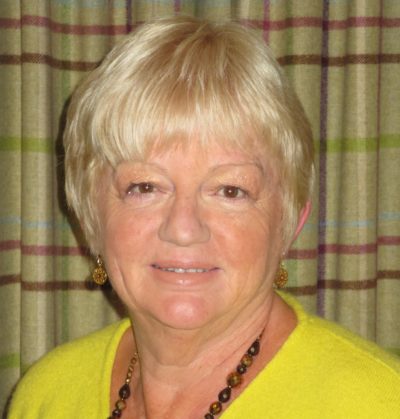
Five minutes that really can save lives
Do you remember the launch of the TV programme Big Brother in the year 2000? An exciting prospect I thought, a fly-on-the- wall documentary in the genre of Castaway that was aired earlier the same year. Secretly, I had wished that I could have been part of the Castaway project. What a disappointment Big Brother turned out to be. It was not at all what I had expected, although it became a very popular format.
One thing inadvertently achieved by Big Brother, however, was to highlight the threat of cervical cancer. The up-front Jade Goody, mother of two, of the 2002 series was diagnosed tragically with cervical cancer and subsequently lost her battle, fought in the public eye, in 2008 at the age of only 27.
The publicity around her death led to a 12% increase in women, between the ages of 25 and 64 coming forward for cervical screening. Jade’s death spoke particularly to women in their 20s, including my daughter and perhaps you, who believed that they were invincible? This was a generation of women who took heed of the message and undertook cervical screening, just as my mother’s generation had been prompted to by the untimely death of Alma Cogan, the biggest earning female performing artist of her generation, who had a similarly publicised death from cervical cancer back in the ‘60s. Are you one who listened and acted?
However, this message seems only to have engaged with certain generations. Currently, several groups of women are not hearing the call.They are those aged 25 to 29, the over 50s, ethnic minority groups, women with disabilities and lesbian and bisexual women. Do they know that cervical cancer is the most common cause of cancer in women under 35? Cervical screening is designed to prevent cancer by detecting early changes.The earlier the diagnosis, the better the prognosis.
The WI has led health-focussed initiatives many times. After all, ‘to advance health for public benefit’ is one of the WI’s key objects. It is therefore shocking that we are returning to an issue that was first proposed in 1964 when Whitchurch-on-Thames WI’s resolution was adopted: That the [NFWI] urges Her Majesty’s Government … to treat as a matter of urgency the provision of comprehensive facilities for routine smear tests for cervical cancer.
The current, critical fall in the take up of this screening is why the WI is revisiting this initiative 60 years on. You may have heard a young WI member address the audience at the 2019 Annual Council Meeting. During the debate, she explained that she had just been diagnosed with cervical cancer and beseeched those present to support the resolution. So, what can we do?
One of my first impressions of social media platforms and the way they appeared to reveal the intimacies of life was a negative, Big Brother moment. But as the medium has matured it has become ever clearer that social media can be harnessed as a campaigning tool. It enables communication that is quick, easy and free. Social media is going to be utilised, alongside the printed word, to engage members in all our campaign initiatives, to inform and prompt, to encourage and share. Will you engage?
This month the Federation is putting the ‘5 Minutes’ campaign at the top of its agenda. So, what can you do? Talk to and inform relatives and friends. Run an information event in your local community, make calming lavender sachets and leave them in your library or doctors’ surgery with a message encouraging participation in the screening programme. There are many other ideas in the campaign action pack (available online and in hard copy from NFWI). Individual acts, however small, can make a huge difference and can save lives!
Carol A. Gartrell, Federation Chairman
back to News


